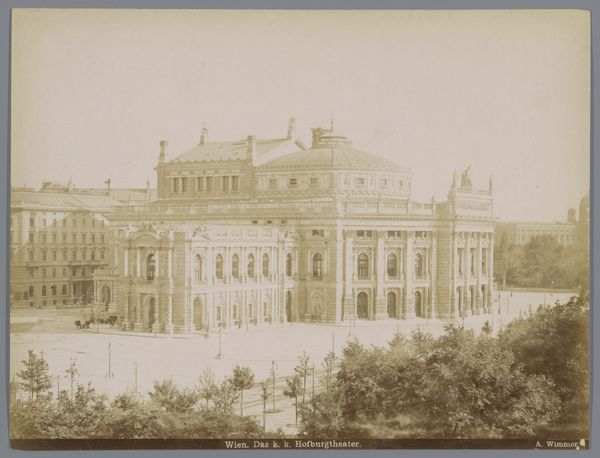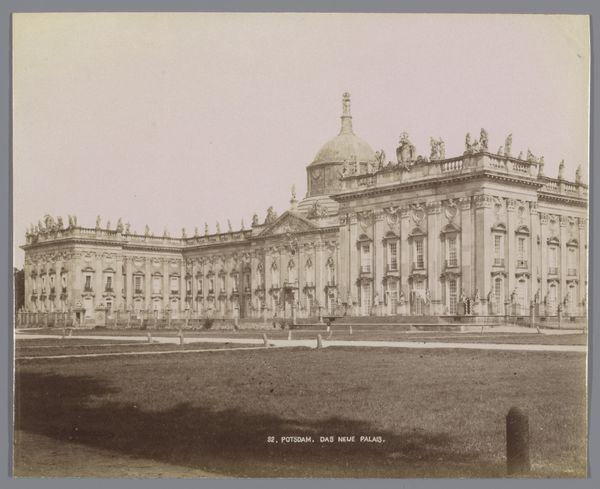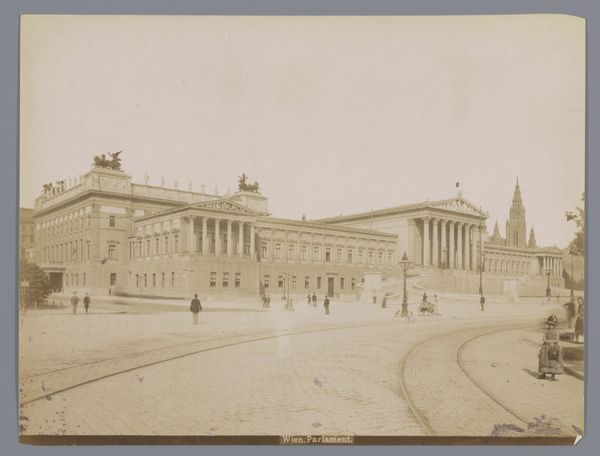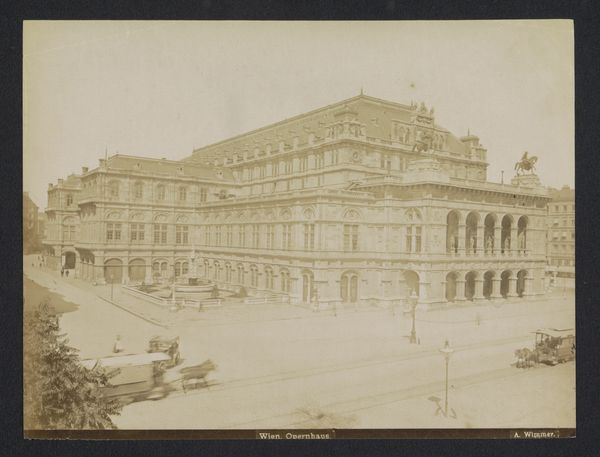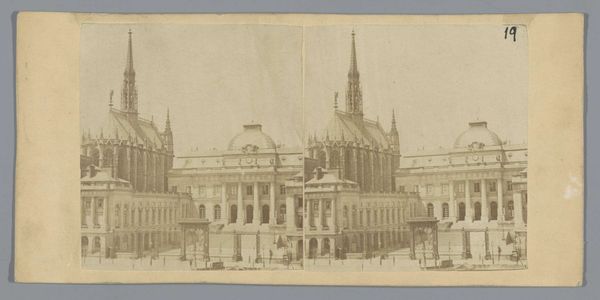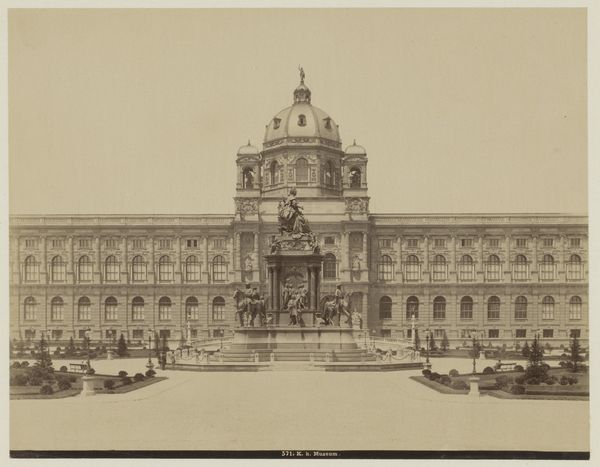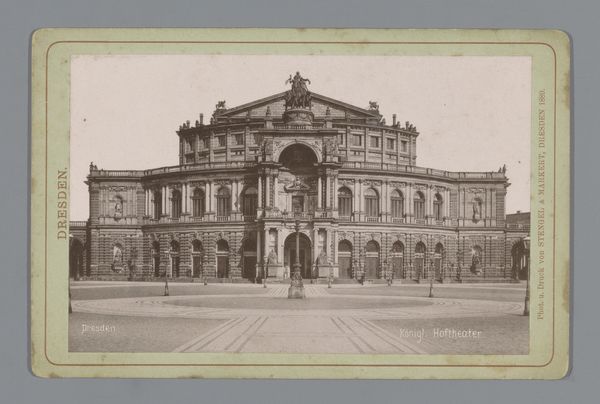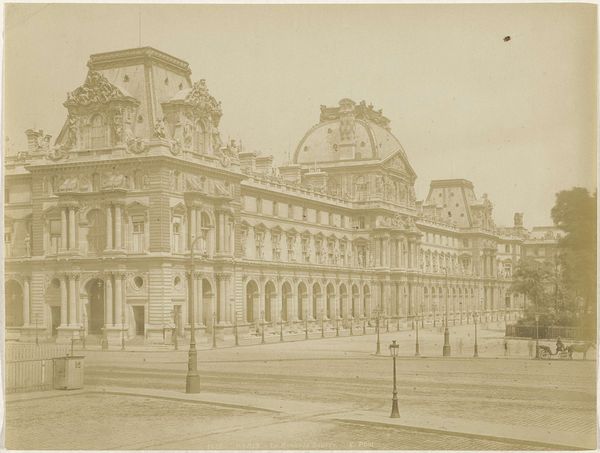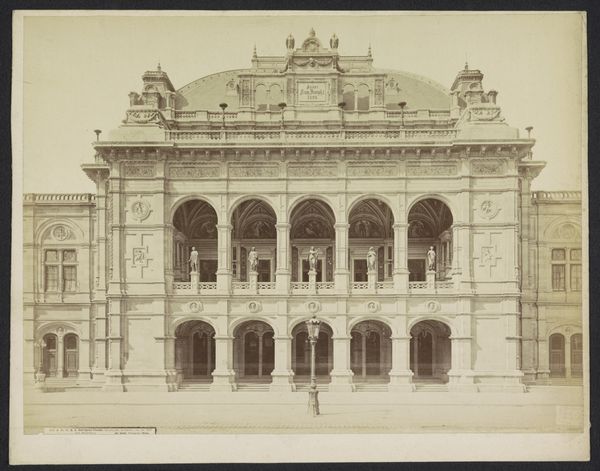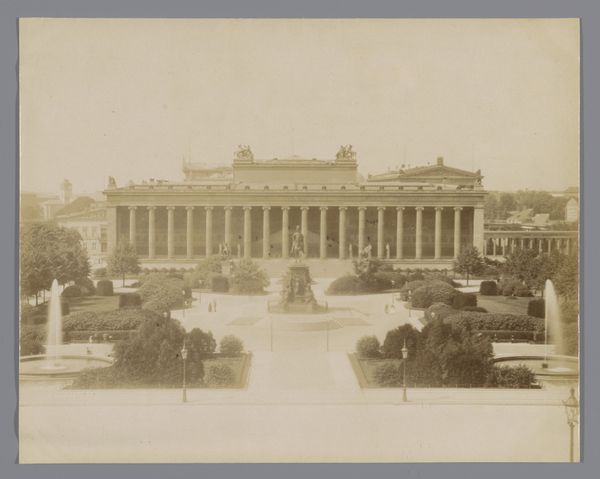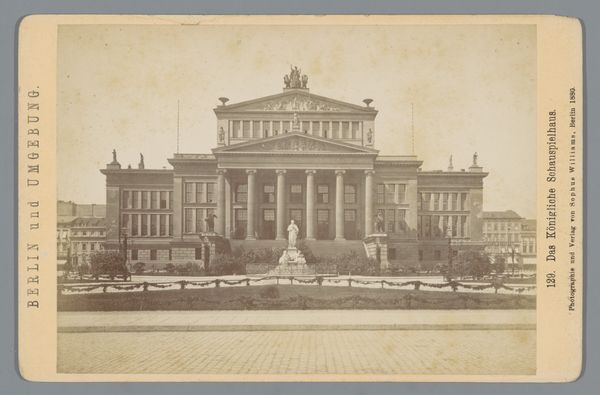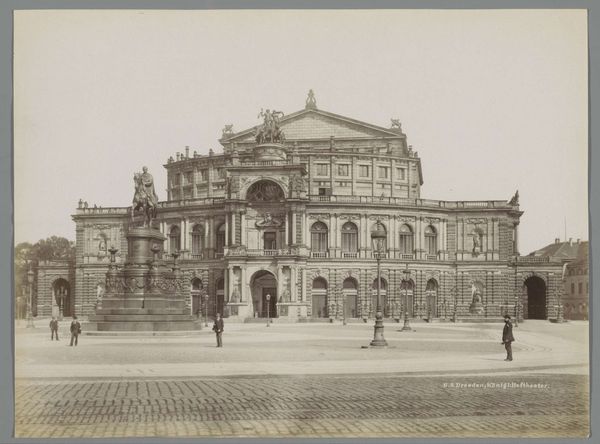
photography, architecture
#
photography
#
cityscape
#
architecture
Dimensions: height 167 mm, width 209 mm
Copyright: Rijks Museum: Open Domain
Curator: This sepia-toned photograph, titled "Rijksdaggebouw in Berlijn," captures the German Reichstag building sometime between 1894 and 1910. The photographer is Friedrich Albert Schwartz. Editor: It projects an aura of austere grandeur, doesn't it? The imposing scale and elaborate classical detailing suggest a fortress of power. Look at the symmetry and repetition—those endless rows of columns and windows. Curator: Absolutely. Consider the social context during those years. The Reichstag, completed in 1894, symbolized a unified Germany, albeit one grappling with rapid industrialization, rising social tensions, and aggressive imperial ambitions under Kaiser Wilhelm II. The architecture practically screams power. Editor: The dome certainly dominates, doesn't it? It disrupts the rigid lines of the facade and draws the eye upward. But also notice how the tonal range in this photogravure, so subtle—a visual manifestation of history's patina? Curator: In terms of symbolism, that dome was highly controversial at the time. It represented a challenge to the authority of the Kaiser. To your point regarding tone, yes, there's a muted, almost melancholic quality to the photograph that underscores the weight of history. The gendered dynamic between masculine empire and feminine domesticity certainly becomes interesting here with how photographic technologies often coded as one thing or another come together to document that time period's gender politics. Editor: So, you're saying this isn't just about bricks and mortar. How fascinating! What about how the image planes are structured? I can see the geometry repeating across the facades and its dome. The balance achieved is superb. Curator: Of course! Architecture is always imbricated within broader political and ideological struggles. Editor: A potent photograph that, despite its subdued color palette, resonates with power, balance, and echoes of sociopolitical tension. I see both then and now at work in it. Curator: Yes, the artwork makes tangible complex negotiations between power, politics, representation, and societal expectations through art and the architecture present in it.
Comments
No comments
Be the first to comment and join the conversation on the ultimate creative platform.
